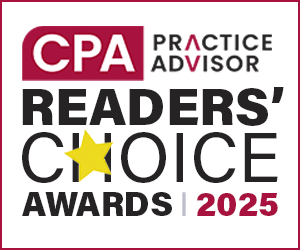From the January 2013 issue.
The demands from clients, team members, and all of those around us continue to increase. In the name of great client service we often try to expand services to cover these demands, but is that the right strategy? Because technology has been a great enabler, we have been able to do more with less, but is that the right strategy?
Benjamin Franklin once said “If you want something done, ask a busy person.” This was later paraphrased by Lucille Ball to “If you want something done, ask a busy person to do it. The more things you do, the more you can do.”
This may be efficient, but perhaps not an effective way of delivering client service. Perhaps David Henry Thoreau was correct when he said: “Success usually comes to those who are too busy to be looking for it.” Can we provide great client service by focusing on doing less, better?
The Idea
Most of us have one or two core competencies. Our clients frequently ask us to stretch in a direction that seems attractive and interesting, but is beyond our core competency or interest. Certainly we want you to grow and expand your expertise. Entering completely new lines of business while maintaining old lines of business can be distracting.
Without the right people and technical resources behind these new and old efforts you can have operational issues and rapid loss of client satisfaction.
Consider the offerings you have today in your practice. Most firms perform tax services for both business and individuals, although many would prefer exclusively doing business tax. Larger firms offer audit services, but many smaller firms have concluded that the regulatory requirements are excessive for the return on this service.
Specialized services like litigation support, wealth management, DCAA compliance or an expatriate tax practice can be highly attractive services. Bookkeeping services have come back into vogue because technology can help make the service easier to deliver.
Examples of technologies that have improved this offering include: SmartVault for document management, ShareFile for file transfers, Bill.com for Accounts Payable processing, Payroll Services from ADP, PayChex, Intuit and others, online accounting with products like Intuit QuickBooks Online, Accounting Relief, Xero, Monchilla, Wave, Freshbooks and SageOne.
Hosting of QuickBooks and Sage 50 allow the traditional desktop products to be run in data centers giving real time access by both the client and the accountant. Some vendors allow all of the applications needed to run a firm to be hosted in a single data center, integrating all of the needed applications together.
But just because you CAN do it all, do you want to? What areas of business and the practice of accounting are your strengths? Where do the strengths of your team lie? Do you have a vision of what you want your firm to be? Note that the following are examples, not suggestions of what your firm could look like. Only you, your partners, and your team can do that.
- Add at least one value added service per client per year, until there are at least four services being used by all clients.
- Provide all services on tablet technology.
- Integrate all service offerings on your web site.
- Respond to all client requests initially in less than 5 minutes through an automated response and within four business hours.
- Perform interactive financial reviews monthly. Schedule face to face client visits at least quarterly.
- Maintain reasonable work hours during tax season and throughout the year, typically less than 50 hours/week total.
- Compensate partners and team members 20% above the going rate in your geographical location.
- Provide the ability to work from any location to all team members.
- Allow ample vacation time for all team members.
- Schedule all tax returns at the beginning of the season, filing extensions where needed.
- Create relationships that allow for fixed fee billing, increasing revenue in the process.
The Execution
Spend some time considering how you’d like the practice to evolve. Schedule times to listen to your clients. Understand the technologies that it takes to deliver those services. Create client service documents that explain the services you provide and the value of those services.
It is wise to discuss services of the past year, and proposed services of the coming year. Have a plan for each client that responds to their needs. Consider monthly payments from clients that flatten out cash flow and reduce collection efforts. Recognize that some good, long-term clients may not fit your definition of the new, good clients. You can use the 80/20 rule to understand the value of much of your client base and the value your expertise.
Select platforms that allow you to execute this vision. This might mean changing software, hardware, procedures and making other temporarily disruptive choices. You need to keep the end-game in mind, and consciously choose each piece to be the best fit. Remember that there are three basic technology strategies: on-premise, hosted in the cloud and SaaS. You can mix all three of these options making a hybrid choice.
Educate your team on the client service strategy, the technology and the culture of the firm you are trying to achieve. Bring your team along with you on this journey. You have to communicate well to be successful.
The Results
While results vary based on the people, clients and locale, these strategies work globally. You can expect to provide higher client satisfaction, work less, make more and have overall better team and client satisfaction.
Use technology as the lever that makes all of this happen. Less complex and fewer pieces of technology can run smoother and with less cost. Be cautious of vendor’s promises of what they can do. Even if a vendor can do what they say, it may not be what you need and want. Go with teams that have proven track records and that understand your business model. These teams may give you even more ideas of services that add more value to your clients.
Thanks for reading CPA Practice Advisor!
Subscribe Already registered? Log In
Need more information? Read the FAQs





